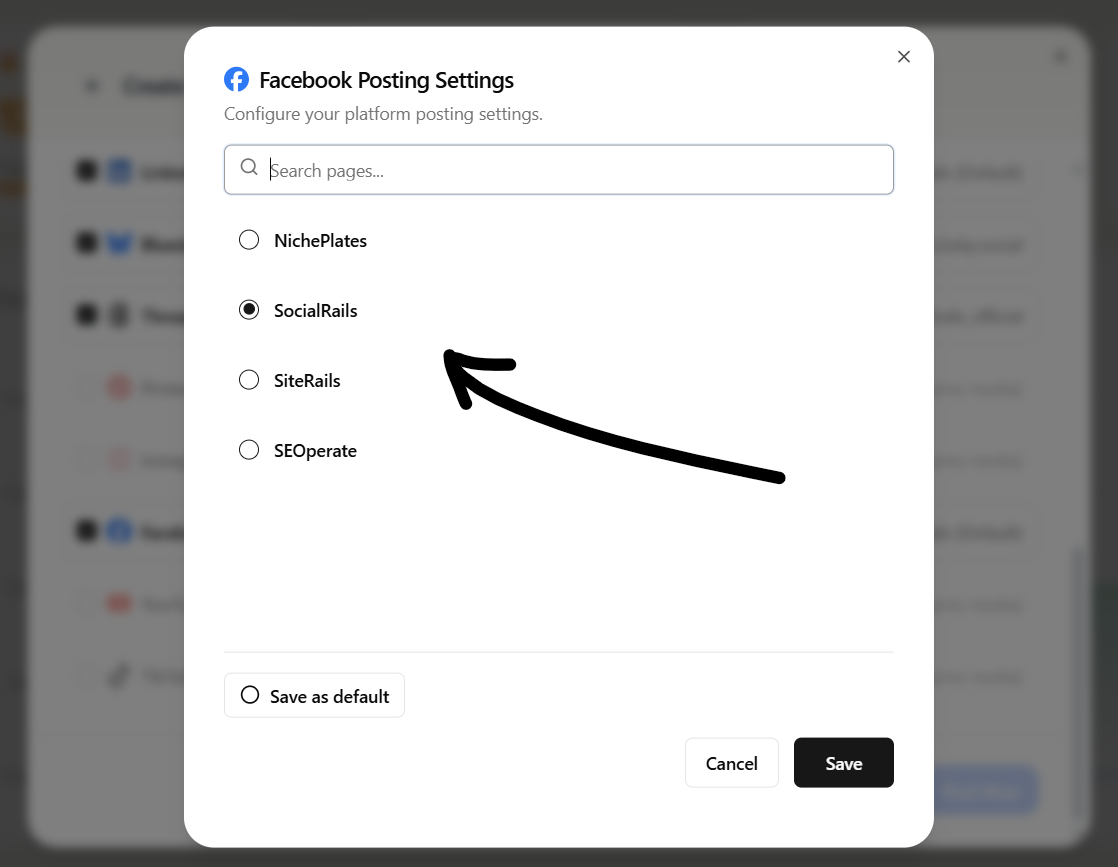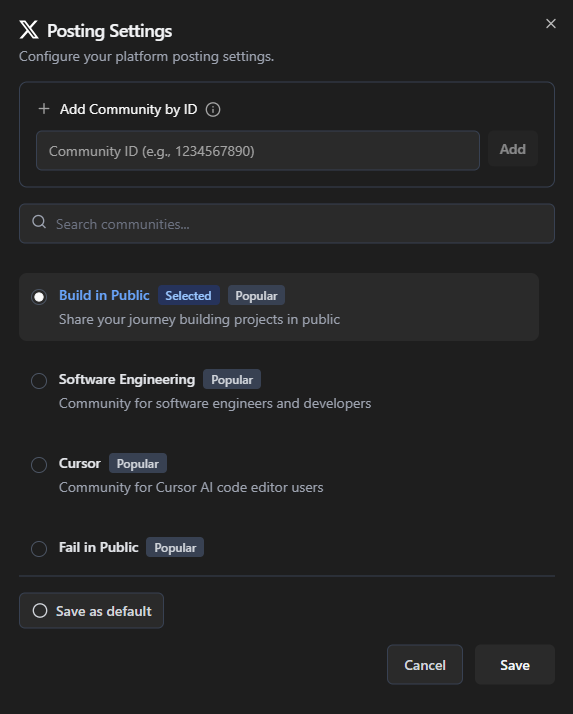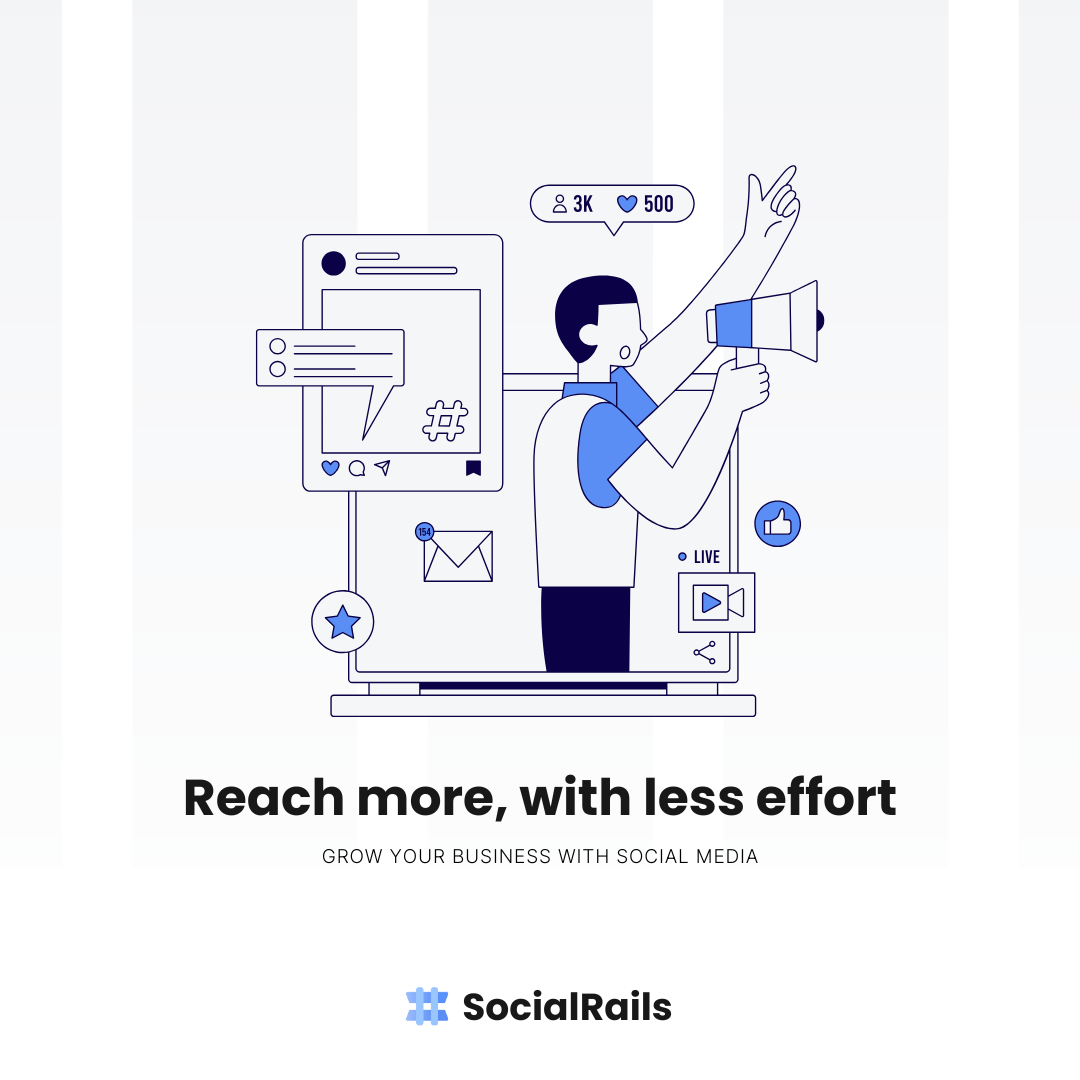What's Social Media Advertising?
Social media advertising = Paying Facebook, Instagram, TikTok, etc. to show your posts to MORE people (not just your followers).
Create content, post everywhere
Let AI do the work. Ideas, posts, images, carousels. Scheduled in seconds.
Start your free trialIt's like paying for a megaphone in a crowded room - suddenly everyone can hear you! 📣
🤔 Quick Knowledge Check
What's the main advantage of paid social media advertising over organic posts?
Why Pay for Ads? (Because Free Isn't Really Free Anymore)

Reach Way More People
Organic posts reach 2% of followers. Paid ads can reach anyone on the platform!
Target Your Perfect Customer
Show ads only to women, ages 25-40, who like yoga, in your city. That specific!
See Exactly What Works
Know exactly how much you spent and how much you made. No guessing!
Get Results Fast
Organic growth takes months. Good ads can bring customers in 24 hours.
4 Types of Ads (Pick Based on Your Goal)

🤔 Quick Knowledge Check
If you're a new business trying to get your first customers, which type of ad campaign should you start with?
Best Platform for Your Business
Social Media Advertising Platform Comparison
| Category | Rate | Description |
|---|---|---|
🤔 Quick Knowledge Check
Which platform typically offers the highest quality leads for B2B companies?

Story ads, Full-screen ads in Instagram Stories
Shopping ads, Product catalogs with direct purchase options
Influencer partnerships, Branded content ads through creator partnerships
LinkedIn advertising
Professional targeting, Job titles, company size, industries, and skills
Sponsored content, Native ads in LinkedIn feeds
Message ads, Direct messages to targeted professionals
Lead gen forms, Pre-filled forms with LinkedIn profile information
TikTok advertising
In-feed ads, Native video ads in user feeds
Branded hashtag challenges, Sponsored challenges that encourage participation
Brand takeovers, Full-screen ads when users open TikTok
Top view ads, Premium placement at the top of feeds
Twitter advertising
Promoted tweets, Increase individual tweets to targeted audiences
Promoted accounts, Grow followers through targeted account promotion
Promoted trends, Sponsor trending hashtags for maximum visibility
Website cards, Rich media ads that drive traffic to your website
Creating effective ad campaigns
Campaign objective setting
Clear goals, Specific, measurable objectives for each campaign
KPI alignment, Metrics that directly relate to business outcomes
Budget allocation, Appropriate spend for expected returns
Timeline planning, Campaign duration and key milestone dates
Audience targeting
Demographics, Age, gender, location, and language preferences
Interests, Topics, pages, and content your audience engages with
Behaviors, Purchase behavior, device usage, and platform activity
Custom audiences, Your existing customers, website visitors, or email subscribers
Creative development
Compelling visuals, High-quality images and videos that stop the scroll
Clear messaging, Concise copy that communicates value quickly
Strong call-to-action, Clear instructions on what you want people to do
Mobile optimization, Content designed for mobile viewing
Ad creative best practices
🤔 Quick Knowledge Check
What's the most important factor in creating effective social media ad creative?
Visual content optimization
High-quality imagery, Professional photos and graphics that represent your brand
Video content, Moving content typically performs better than static images
Brand consistency, Visual elements that match your overall brand identity
Platform specifications, Correct dimensions and formats for each platform
Copy and messaging
Benefit-focused headlines, What's in it for the audience
Emotional connection, Copy that resonates with audience feelings and motivations
Urgency creation, Time-sensitive offers that encourage immediate action
Social proof, Testimonials, reviews, and trust indicators
Call-to-action optimization
Action-oriented language, Clear verbs that tell people exactly what to do
Value proposition, Why people should take the requested action
Friction reduction, Making it as easy as possible to complete the desired action
A/B testing, Testing different CTAs to find the most effective approach
Campaign optimization strategies
Performance monitoring
Daily budget tracking, Ensuring campaigns stay within budget limits
Key metric monitoring, Watching performance indicators closely
Creative performance, Identifying which ads perform best
Audience response, Understanding how different segments react to ads
Bid strategy optimization
Automatic bidding, Letting platforms optimize for your objectives
Manual bidding, Setting specific bid amounts for more control
Bid adjustments, Modifying bids based on performance data
Budget reallocation, Moving money from poor-performing to high-performing campaigns
A/B testing approaches
Creative testing, Different images, videos, or copy variations
Audience testing, Comparing performance across different target groups
Placement testing, Finding the best ad placements for your content
Timing testing, Identifying optimal days and times for ad delivery
Measuring advertising success
Cost metrics
Cost per click (CPC), How much you pay for each click on your ads
Cost per thousand impressions (CPM), Cost to show your ad 1,000 times
Cost per acquisition (CPA), How much you spend to acquire each customer
Return on ad spend (ROAS), Revenue generated divided by advertising costs
Engagement metrics
Click-through rate (CTR), Percentage of people who click your ads
Engagement rate, Likes, comments, and shares relative to impressions
Video completion rate, How many people watch your entire video ad
Conversion rate, Percentage of ad clicks that result in desired actions
Business impact metrics
Lead generation, Number of qualified leads generated from advertising
Sales attribution, Revenue directly traceable to advertising campaigns
Customer lifetime value, Long-term value of customers acquired through ads
Brand awareness lift, Increased brand recognition from advertising efforts
Advanced advertising techniques
Retargeting strategies
Website visitor retargeting, Re-engage people who visited specific pages
Abandoned cart campaigns, Target people who started but didn't complete purchases
Custom audience layering, Combining multiple audience criteria for precision
Sequential messaging, Different messages based on previous interactions
Lookalike audience development
Source audience quality, Using your best customers as the foundation
Audience size optimization, Finding the right balance between reach and similarity
Geographic considerations, Creating lookalikes for specific regions
Regular refreshing, Updating lookalike audiences as your customer base grows
Campaign automation
Automated rules, Setting up automatic responses to performance changes
Dynamic creative, Ads that automatically customize based on viewer characteristics
Smart bidding, AI-powered bid optimization for better performance
Budget optimization, Automatic budget allocation across ad sets
Common advertising mistakes
Poor targeting choices
Targeting too broadly wastes money on irrelevant audiences, while targeting too narrowly limits reach potential.
Weak creative content
Low-quality visuals or unclear messaging reduces ad performance regardless of targeting quality.
Insufficient testing
Not testing different creative or targeting options means missing optimization opportunities.
Ignoring mobile optimization
Most social media usage is mobile, ads must work well on mobile devices.
Budget management and scaling
Advertising Budget Allocation Strategy
| Category | Rate | Description |
|---|---|---|
Budget allocation strategies
Campaign prioritization, More budget for high-performing objectives
Platform distribution, Allocating spend across different social platforms
Testing budgets, Reserving money for trying new strategies
Seasonal adjustments, Modifying budgets based on business cycles
Scaling successful campaigns
Gradual budget increases, Slowly increasing spend on winning campaigns
Audience expansion, Growing successful campaigns to larger audiences
Creative refreshing, Updating ads to prevent audience fatigue
New platform expansion, Taking successful strategies to additional platforms
Social media advertising with SocialRails
SocialRails supports advertising efforts through:
Campaign coordination, Align paid advertising with organic content strategy
Performance tracking, Monitor how advertising affects overall social media performance
Content optimization, Use advertising insights to improve organic content
Multi-platform management, Coordinate advertising across all relevant platforms
ROI measurement, Track business results from advertising investments
Quick advertising checklist
✅ Define clear objectives for each advertising campaign
✅ Target specific audiences rather than trying to reach everyone
✅ Create high-quality visuals that stop scrolling and capture attention
✅ Write compelling copy that clearly communicates value and next steps
✅ Set appropriate budgets based on expected returns and business goals
✅ Monitor performance daily and optimize based on data
✅ Test different approaches to find what works best for your audience
Social media advertising transforms your social media presence from hoping for organic reach to guaranteeing your message reaches the right people at the right time, driving predictable business results through strategic paid promotion.